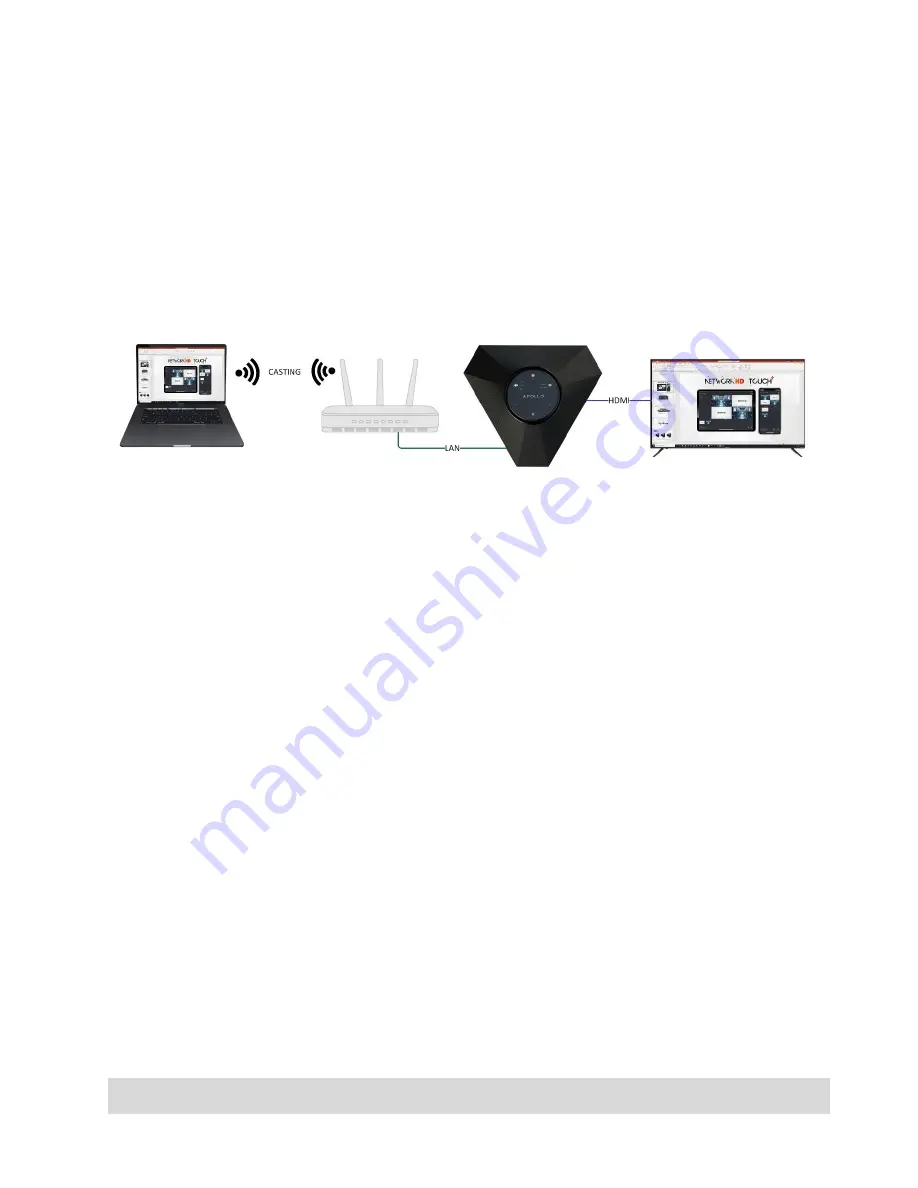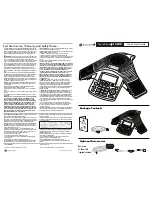
Copyright © 2021 WyreStorm Technologies |
WyreStorm.com
Apollo User Manual | 210622
4 of 10
Technical Support: 844.280.WYRE (9973)
Support@WyreStorm.com
Wireless Casting
In order to wirelessly cast from a phone, tablet or computer, a wired LAN connection must be made to
Apollo. Apollo does not emit it
’
s own SSID and requires an existing network to have Wi-Fi. Apollo must exist
in the same IP address range as the wireless network in order for personal devices to cast content. Apollo
supports both Airplay for Apple devices such as a MacBook, iPad or iPhone and Miracast for Android and
Windows 10 computers.
Important! Miracast will not work if the client PC has Wi-Fi disabled. Miracast does not operate over a wired
LAN connection.
In the absence of video, Apollo generates
a “Guide Screen”
and is shown on the connected display with
instruction on how to cast content using the various casting protocols.
USB Peripherals
Both the APO-200 and APO-210 feature a native USB 3.0 device port. Any peripheral connected to this port
becomes available to the personal device connected via the USB-C or USB 2.0 connection. Most
commonly this port will be used for connecting conference cameras
, such as WyreStorm’s
For long distance runs of USB peripheral devices, consider using the
, which is WyreStorm’s
15m USB 3.2 active extension cable.
Specifically on the APO-210, peripheral USB devices can be connected over the HDBaseT output. By using
USB over HDBaseT, you can utilize a single cable for A/V extension and data between the display location
and Apollo. Using USB over HDBaseT does limit connection to USB 2.0 devices only, due to bandwidth
limitations. We recommend the RX-500 as the best suited HDBaseT receiver to use with Apollo.
By default, Apollo is set to auto switch the active USB host between the USB-C or USB 2.0 Type A
connection. USB auto switching uses LIFO (Last In First Out) meaning, if a new device is connected, Apollo
recognizes the new device and can automatically send connection of the speakerphone and USB
peripherals to this newly connected source. This capability is great for applications that will have many
dev
ices that are ‘hot
-
plugged’ during a meeting.
You can also manually adjust this to force a certain USB connection as a fixed host so that newly
connected devices do not trigger auto switch, which is great for Zoom or Teams room applications. This is
covered in more detail in the Zoom/Teams section of this document.
Multiview
Up to two separate video sources can be transmitted through Apollo in a split screen view. This can be a
combination of wireless & wired devices, for example two Airplay devices, or one Miracast & one USB-C.
Multiview uses LIFO (Last In First Out), Apollo will automatically switch to multiview when a second device
sync is detected.




























